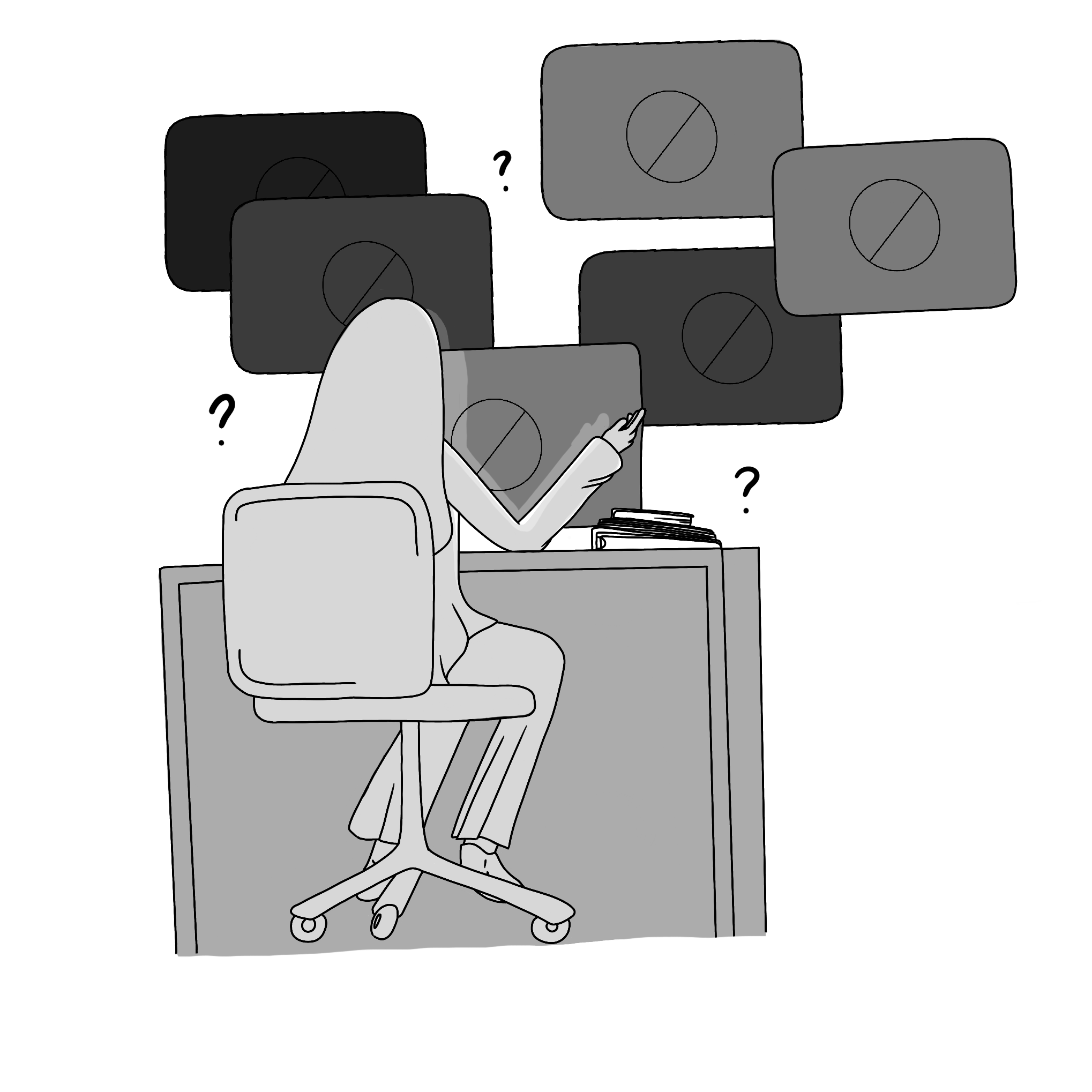Internet filtration a source of frustration among MHS students, teachers
Isabelle Paley | The Chronicle
Surfing the web at school is yielding choppy waters.
As a measure for student safety, Mason City Schools (MCS) has applied software that filters certain websites or keywords to all of the 14,000 devices throughout the district. In previous years, the filtering company Securly was efficient at blocking inappropriate websites, but left little room for customization from the school district.
Christine McCormick, the district’s innovative systems officer, is in charge of what websites students can access districtwide. McCormick said that the limited settings forced every student to be filtered on the same level.
“The [internet] filter only had one setting, so high school students and elementary school students were filtered at the same level,” McCormick said. “The little ones needed a little bit more filtering.”
Due to the limited customization that Securly allowed, the district decided to switch to Lightspeed for the 2021-22 school year, as it provided the district with a more hands-on approach to website filtering. The new system would allow for certain websites to be accessed by grade level to ensure that each person is viewing information appropriate to their learning.
While using the old system, McCormick and her team were able to take teacher requests to unblock a website, a process known as whitelisting. Because of the switch to the new system, all of the websites that they had whitelisted became restricted once again. McCormick said that figuring out what websites should and shouldn’t be blocked is incredibly difficult.
“That’s why more are blocked this year, because we just kind of started over,” McCormick said. “We did the ones that we knew were valid, but there were some that we just didn’t know [about].”
There are different views among both students and teachers on what is going too far to keep kids safe. Government teacher Maria Mueller said she feels that the filter can be good, especially for teachers, because it is not their job to delegate what websites students are on.
“A [teacher’s main job] is to help [students] focus on academics,” Mueller said. Instead of having teachers ensure students are on appropriate sources, the filter is there to provide a buffer so that students and teachers are able to focus on their jobs, without the distraction of certain websites.
Providing that buffer may aid in educational focus, but some students, such as senior Hritika Kotian, believe that it can inhibit a few key aspects of modern teenage development. Learning how to find safe and reliable websites is not a core academic subject, but Kotian believes that it is an important skill to learn before students begin their post-graduation plans.
“I think that [the school] shouldn’t restrict anything because we are old enough to understand the problems of specific websites,” Kotian said. “If we can’t get through high school without learning how to navigate websites, we are all going to go off to college where there are no restrictions and it’s going to be a lot different.”
Even though there are varying views between students and teachers, they all share a common frustration towards some inconveniences caused by website restrictions. Mueller has experienced issues regarding the information she can access, even on a teacher’s computer.
“When I am researching something on gun control, how do [I conduct] research if everything that says ‘gun’ gets blocked?” Mueller said.

In classes such as Advanced Placement US Government and Politics, students are tasked with researching political topics such as gun violence and other mature themes, but are unable to access the websites because of the new system. Kotian said that one of the pitfalls of website blocking is that it limits the sources she can access to complete assignments.
“For certain classes, I need to watch video notes and I can’t access YouTube or it will be restricted for my account,” Kotian said “It’s really annoying when I can’t get my work done.”
YouTube supplies easy access to both educational resources and inappropriate content. The difficulty of teachers navigating appropriate videos led Google to increase the number of videos blocked, which, according to McCormick, impacted teachers.
“YouTube put some restrictions that we couldn’t control,” McCormick said. “It’s what YouTube did to all educational institutions.”
If a school has a Google Education account, as Mason does, Google will automatically block videos that are deemed “inappropriate,” and limit the use of interaction that students can have with the site. The filtration software isn’t isolated to just students. Teachers and administrators also cannot access specific videos or websites. McCormick said that she experiences the same frustrations students are facing.
“I get blocked by things and get irritated, too,” McCormick said. “It’s not just the students who have to abide by the filter.”
In the process of attempting to preserve and protect the minds of students, there are always going to be frustrations experienced by staff and students. Regardless of those frustrations, McCormick said she still believes that, ultimately, Mason’s internet filtration is important.
“I would love it if kids were able to experiment a little bit more,” McCormick said, “[School] is a good place to figure out important things, but protections are in place to protect [students] from inadvertently getting into things they shouldn’t be looking at.”
Graphic by Becca Hunter
